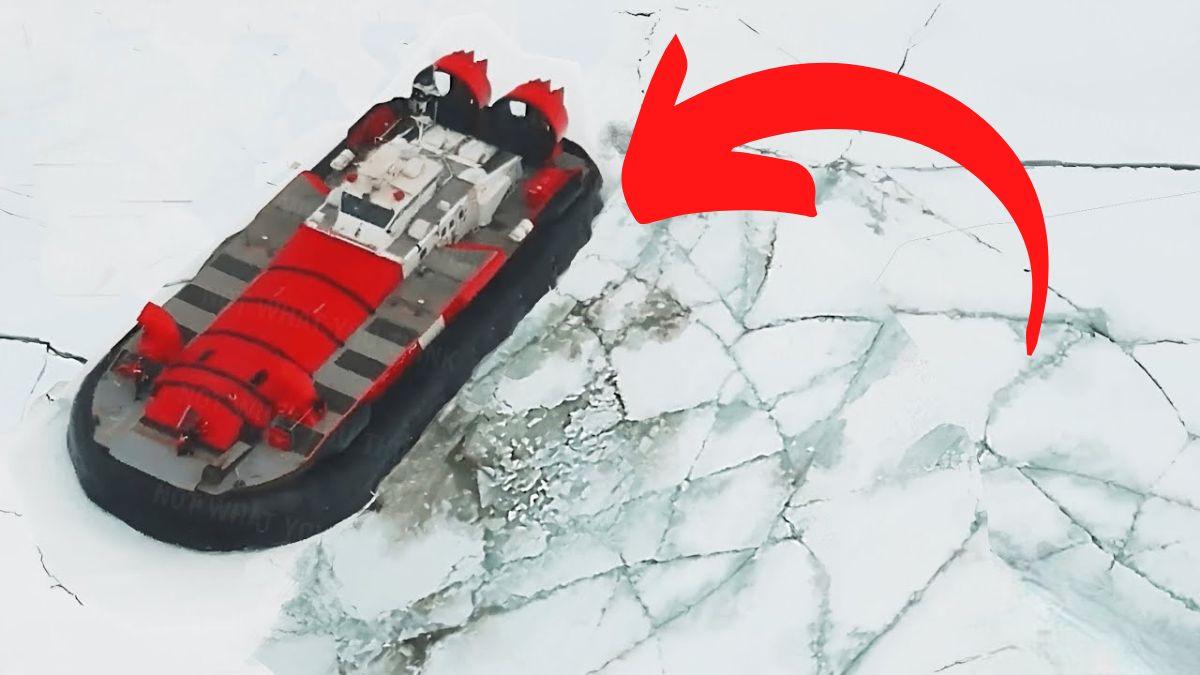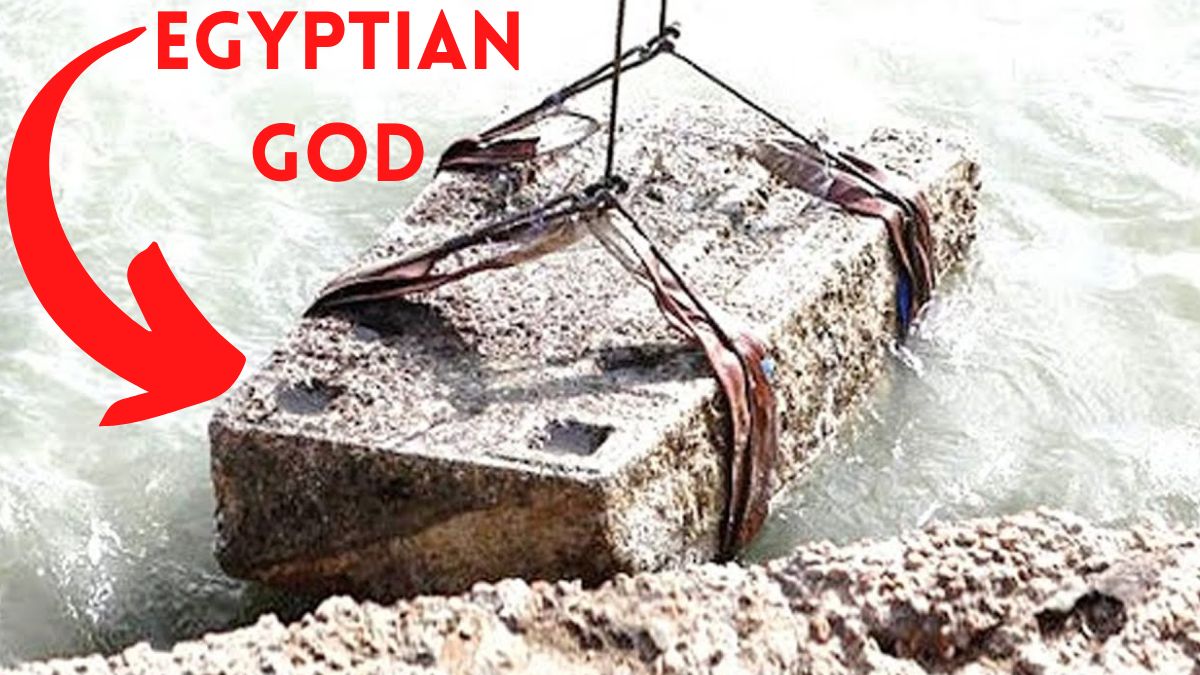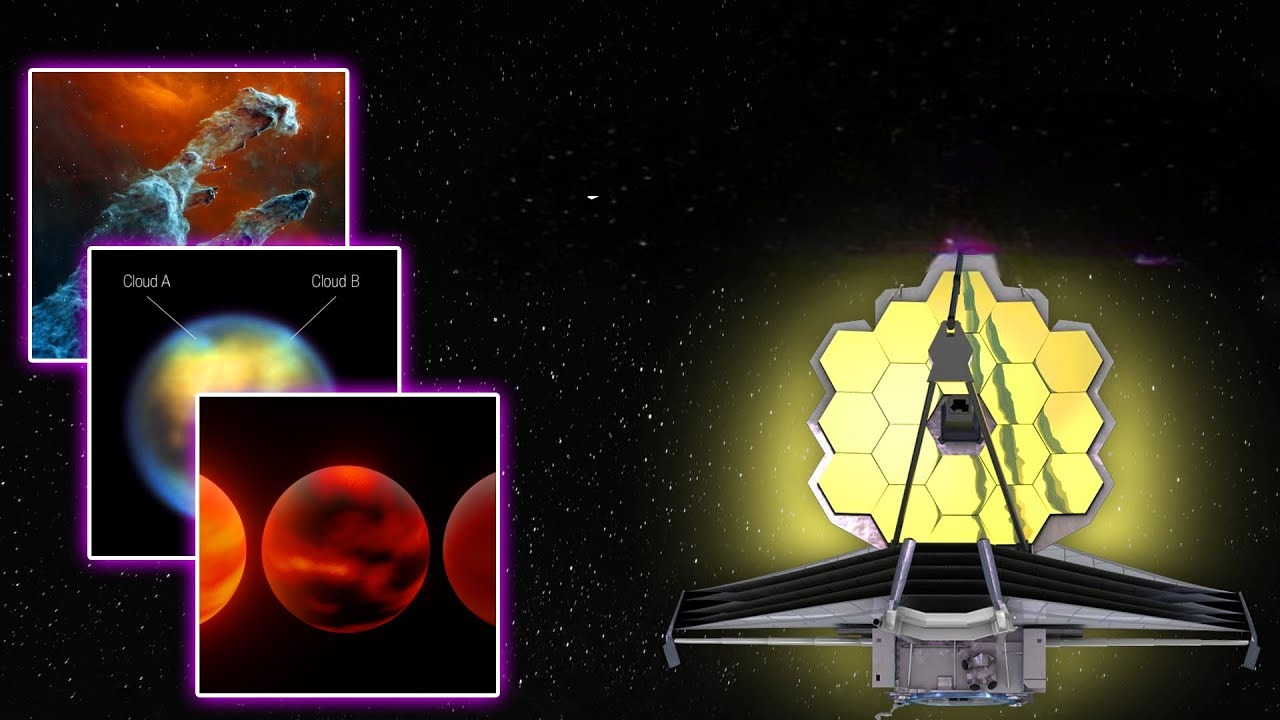
In 1966, on the south eastern coast of Barbados, the US Army in partnership with the Canadian Government, began the earth shuddering tests of this massive artillery gun.
A 36 meter long barrel constructed by welding two 16 inch naval guns together end to end.
Loaded with over half a metric tonne of black powder, the barrel needed rings of stiffening reinforcement along its length to withstand the immense pressure developed inside.
Long white straightening rods needed to carefully adjust the barrel to shoot straight and true.
[1] Its white paint gives away its true purpose.
This was no military gun painted in drab olive camouflage.
This was a scientific instrument.
A space cannon.
A gun capable of launching a projectile to an altitude of 180 kilometers.
Nearly half way to the orbiting altitude of the international space station, and the altitude of the lowest orbiting satellite ever This gun was undeniably a space gun.
Holding the record of highest altitude projectile ever launched.
The history of this bizarre science project is a fascinating story.
From the advances in ballistic science needed to achieve this extraordinary feat, to the reasons Barbados, a small island in the Caribbean was chosen for the gun’s location.
A tale that ends with bureaucratic sabotage and the assassination of the lead scientist.
The remnants of these experimental guns remain here on the beaches of Barbados.
Laying idle since their final launch in 1966.
Rusted relics of a bygone era, that you can catch a glimpse of while taking off from runway 09 of Grantley Adams International Airport But why here, why on this beach off the southeastern coast of Barbados?
Project Harp was a joint effort from the Canadian Government, funding research at McGill University and the US Army’s Ballistics Research Laboratory, who were seeking more data on upper atmosphere conditions, in the same decade the SR-71 made its debut this data was highly valuable,but gathering that data with sounding rockets was expensive.
Canada, not short on wide open spaces, could have located suitable sites near the university’s hometown of Montreal.
However, the dean of McGill, Donald Mordell, had higher ambitions than just gathering upper atmosphere data.
A vision of a low cost space launch system, capable of launching satellites into orbit for a fraction of the cost.
Barbados was selected for these reasons.
The most eastern of all the Caribbean islands.
Firing from the south eastern shore at a fixed firing angle over the sea, there was essentially unlimited fallout area.
With plenty of space for debris from the launches to fall into the ocean.
Located along the launch path of Cape Canaveral, the infrastructure needed to track the launches already existed nearby.
And, critically, located just 13 degrees north of the equator, Barbados would benefit from the increased rotational speed at the equator and require lowered launch energies as a result.
Barbados also came with the added benefit of being a region of extreme atmospheric research interest, the nursery of hurricanes that surge through the gulf of mexico every year.
Barbados of the 1960s was a low income country, highly dependent on sugar exports, yet to make the transition to a relatively high income tourism country independent from the British empire.
The potential of a burgeoning space launch industry on the tiny island was met with enthusiasm by the country’s government.
Striking a deal with McGill University To meet its objective Project Harp needed an extremely powerful gun, with a delicate control over the explosive power pushing the payload towards space.
Projectile design is the first area of concern.
This graph shows the relationship between shot weight and muzzle velocity for the harp gun system.
A lower mass projectile will have a higher muzzle velocity.
We need to balance this with the ballistic coefficient, which is a measure of the projectile’s ability to resist air resistance and maintain its velocity.
Found by dividing the mass of the projectile by the drag coefficient multiplied by the cross-sectional area.
Creating a narrow and dense projectile, essentially a dart, can maximize ballistic coefficient.
This is why Project Harp utilized sabot rounds.
A sabot round is much narrower than the gun barrel, allowing it to minimize its cross section and maximize its ballistic coefficient.
However we need a method of creating a seal with the gun barrel, allowing the propellants pressure to act on the projectile.
There are several design options for sabots, but as we saw, projectile weight affects muzzle velocity, and these sabots increase the effective projectile weight, despite falling away upon leaving the barrel.
So it’s vital to keep these plates as light as possible.
The main body of a pusher plate is made from lightweight aluminum, but the aluminum is quite soft and the base of the missile has a low area.
With the immense pressure pushing on the fins from below, they can begin to sink into the aluminum.
To counteract this a high strength steel insert is often added for the projectile to sit upon.
We then need some method of keeping the projectile aligned in the barrel.
This often was as simple as placing laminated plywood cutouts between each fin.
Finally we need a soft material that won’t scratch the barrel to form a tight seal between the sabot and the barrel, for this Project Harp used polyethylene.
The altitude reached is ultimately decided by the velocity of the projectile exiting the barrel, the muzzle velocity.
From here pressure from the guns barrel will no longer be acting on the projectile and atmospheric drag will begin to sap away the kinetic energy imbued to it.
Using gunpowder as an energy source is a challenge.
Produce too much energy too quickly, and the barrel of the gun will be over pressured.
At best this damages the gun, at worst it creates a bomb.
The key to ballistic performance is this graph.
The gun pressure distribution (page 171 of book).
On the x-axis we have the distance from the breech face, and on the y-axis we have pressure.
Which may look something like this.
Over the centuries there have been many ways of assessing the pressure along points in the barrel, with some of the earliest being simple copper or lead plates placed inside the gun barrel that would deform according to the pressure they experienced, but the piezoelectric crystal sensor revolutionized the science.
[2] This sensor, which uses a piezoelectric crystal, could measure a varying pressure over time, providing a real time measurement of pressure, not a single maximum pressure point provided by a metal deformation plate.
Piezoelectric means a material, typically a crystal, generates an electric current when mechanical stress is applied, a current which can be measured to generate a pressure reading.
[3] These sensors can be placed at the bottom of rounds to develop optimized pressure gradients.
Allowing scientists to test new methods.
With the ultimate goal of maximizing the area under this curve, that’s the total energy released, without exceeding the maximum pressure the gun can handle.
Project HARP used some clever methods to achieve this.
First, the most obvious, extending the length of the barrel.
The longer the barrel the more time the pressure has to act on the projectile.
However as the propellant continues to burn, and the volume behind the projectile increases, the pressure behind it continually diminishes.
Eventually aerodynamic drag and friction between the projectile and the barrel will equal the pressure behind the projectile and no further gains in velocity are possible.
So we need to figure out what the optimal barrel length for a given charge and projectile will be.
Next we need to maximise the energy released from our propellant.
To increase muzzle velocity Project Harp needed black powder, A LOT of black powder.
They used huge 50 kilogram propellant bags that were rammed into the barrel with a hydraulic press behind the projectile.
Stacked directly on top of each other, each having ignition charges sewn into the back of each bag facing the primer.
These ignition charges only worked when the initial flame front from the primer reached them with sufficient temperatures.
Finally a large air gap between the final bag and the sabot base was included.
But tests using this configuration did not end as expected.
This is a typical pressure-time diagram output by the pressure sensors inside the barrels for these early tests.
The peak pressure here is a lot higher than the scientists predicted and the muzzle velocity also came in lower than expected.
Clues to the cause began to emerge upon inspecting the polyethylene disk from the bottom of the sabot.
Grains of unburnt black powder were lodged in the soft white plastic.
Unburnt black powder means the total energy potential of the propellant was not released, but also indicates a larger problem.
This is what was theorized to be happening.
The primer ignites the first black powder bag, creating a pressure front which forces the column of bags towards the sabot base, while hot gas flows around the edges towards the projectile.
The flame front begins marching forward at a slower rate than the pressure front, while the pressure front compresses the bags preventing further gas from flowing around them, impeding the flame front further.
The column impacts the sabot at high speed, the force of this impact was at times large enough to cause damage to the sabot and projectile.
At this time the flame front catches up, and a high pressure region is created in the compacted zone, which travels backwards towards the breech, wasting precious kinetic energy.
Testing new methods with the only 16 inch 120 foot long gun in the world was not feasible, so interior ballistics tests were performed with this.
A massive instrumented barrel on rails that recoil backwards down the rails with each firing, allowing the researchers to develop new ignition methods in relative safety.
Although it was called the HARP Flyer because it would frequently fly off its mountings when tests overpressured it.
A solution to the black powder bags racing ahead of the flame front was devised by placing light wooden spacers between the bags.
These spacers prevented the movement of the bags, but also helped the bags further along the barrel to ignite as hot gas could reach them in the air gaps provided by the spacers.
Using the HARP flier, ballistic performance graphs comparing the two methods were created, and they looked like this.
With peak pressure lowering and the area underneath the curve being larger for the spaced charges.
This did not solve the issue completely and the final configuration included electrically fired squids to simultaneously fire all bags together.
The projectiles themselves took many forms with different payloads and designs.
One fascinating payload came in the form of tri-methyl-aluminum, or TMA, a liquid chemical that was loaded into the inside of the missile, but this was not a propellant.
The liquid was pumped from the rocket with a piston driven by compressed nitrogen gas, triggered by a timer.
Once outside the rocket the TMA began to react with oxygen in the ozone layer, forming a luminescent tracer cloud.
A cloud that glowed in the dark.
Allowing ground observers to easily see it.
This tracer was used to analyze wind shere in the upper atmosphere, vital data in an era of intense aerospace development.
Project Harp provided a cheap and reliable method of studying the upper atmosphere when compared to sounding rocket alternatives, and the US Army’s funding was tied to this objective, but the Canadian leadership of Project Harp had loftier ambitions, centered around a massive gun capable of launching satellites to space.
A gun with twice the bore diameter of Project Harps largest gun, at 32 inches, with thick solid steel walls to withstand the expected increase in barrel pressure.
However the real challenge would be in the development of a multistage, high mass fraction rocket system capable of firing from the gun and accurately placing a satellite into orbit.
The Martlet 4 was designed for this purpose.
A full bore design, removing the need for a sabot, only the polyethylene disk was included to protect the bottom of the rocket from the hot gas inside the barrel.
This is a massive challenge.
During launch the rocket would be under extreme compressive load.
This would cause the rocket to bulge outwards creating friction with the barrel.
On one test the fibreglass rocket actually got stuck inside the barrel and the gas pressure burst through the middle of the rocket blowing the internals of the rocket out of the muzzle like a giant buckshot cannon.
Developing the system required numerous tests with inert propellant stand ins.
Longitudinal stripes were painted onto test projectiles to examine friction wear after each shot.
For these tests the gun was moved to an ice and snow covered lake north of McGills Montreal Campus.
Here they could fire the projectiles in a horizontal position, landing on the snow and ice and slowly decelerating to be recovered by the researchers for analysis.
Another design, the Martlet 3C was designed to be slightly smaller than the gun bore, and the space between the barrel and the rocket casing was filled with a dense fluid that would travel with the rocket in bore and prevent friction on the rocket casing.
It was ultimately decided after testing that a full bore rocket made from fiberglass with a teflon coating was the best option.
When it came time to test active propellant the propellant grain layers were laminated together in a hydraulic press around a star shaped mandrel.
When dried an inhibitor coating was applied, the end casings, including the nozzle were fitted and the fibreglass casing was simply wrapped around the solid propellant and cured.
This was an extremely cheap method of construction.
Structural issues were assessed with this method and when completed flip out stabilization fins were incorporated and the single stage Marlet 3E was born.
Capable of placing 25 kilogram payload to an apogee of 450 kilometers.
Above the orbiting altitude of the ISS.
However this was not orbit, without the necessary horizontal velocity these payloads would simply fall back to earth.
To achieve orbit a multistage system was needed.
The Marlet 4.
However scaling a system like this up would be extremely difficult.
G hardened guidance and control systems needed to be developed Feeding into a central computer that controlled cold gas thrusters.
High acceleration tests proved these systems were capable of surviving up to 5000 gs, well above the launch acceleration.
The staging would necessitate gradual decreasing of diameter, and so the previous method of fluid support was revisited.
This optimized staging method was proving difficult to develop with the time pressure on the program.
The joint US-Canadian program was time limited to 3 years, and the engineers at project harp pursued unguided multistage rockets based on earlier saboted systems.
Ultimately the program ended, on June 30th, 1967, before its ambitions could be realized.
Managing the bureaucracy between 3 institutions, a university, a government and a military proved too difficult.
Each having their own priorities.
Leaving the chief engineer behind Project HARP Gerald Bull, lost in the wind.
Seeking a new patron from this expertise he wrote his own demise.
Beginning by selling and smuggling weapons to the South African government, ignoring a United Nations arms embargo and earning himself 6 months in US prison.
Upon release he continued selling arms to the South African government and got caught and fined again.
Eventually moving to Brussels to ply his trade there.
[4] In 1981 he was approached by the Iraqi government, led by the now infamous Saddem Hussain.
With a 25 million dollar paycheck, Bull took the knowledge he gained during project harp to Iraq to begin a new project, Project Babylon.
A project with the ultimate goal of building an artillery weapon capable of firing from Iraq into Israel and Iran.
A hare-brained scheme, that was proven to be completely tactically useless during World War 2, and would be even less effective in the era of guided missiles.
Bull was supposedly aware of how ineffective this would be as a weapon and used this as justification to continue his research, but the Israeli government didn’t see things that way and Mr Bull was assassinated as he placed the key into the door of his Brussels home.
He was found by police lying on the ground with a briefcase containing 20 thousand dollars inside.
Other projects like Project SHARP, an even bigger light gas powered gun was tested in California in the 90s.
No projectile can exceed the velocity of the propellant pushing it, and Project SHARP realised this and began using light weight hydrogen gas instead.
Capable of achieving a muzzle velocity of 7 km/s, but the estimated 1 billion dollar funding needed to scale it up never arrived, and the system ultimately was used to test subscale hypersonic scramjet designs.
Today Spinlaunch is attempting to pick up where Project Harp left off, using a completely different form of kinetic launch system to replace large expensive first stage rockets.







